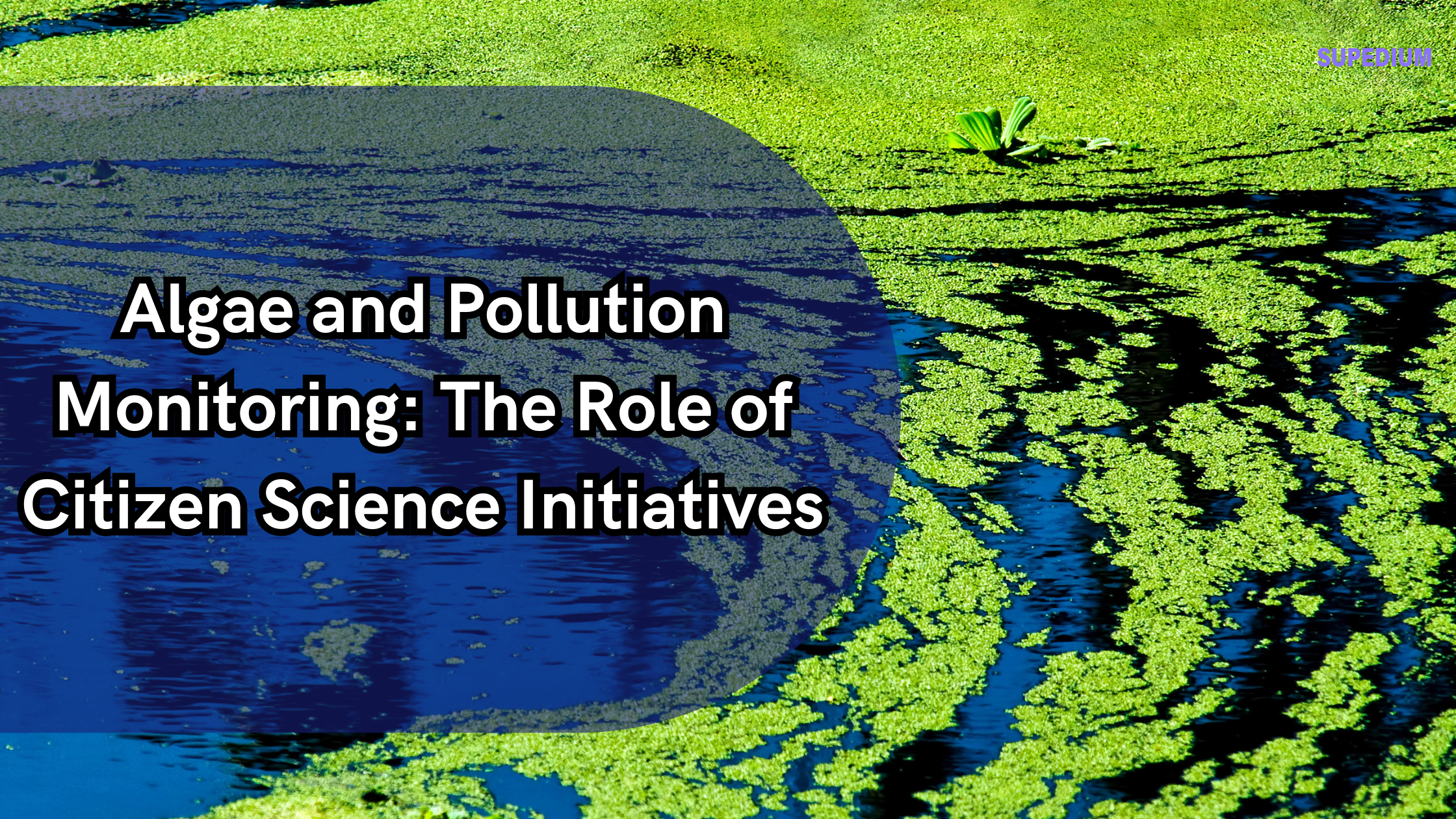Table of Contents
![]()
Citizen science, where non-professional scientists contribute to research, has gained traction in many fields, including environmental monitoring. One significant area where citizen science is making an impact is in the monitoring of algae and pollution. This article explores the role of citizen science in these efforts, highlighting the importance of algae and pollution monitoring, the key initiatives, the benefits and challenges, and the future of these programs.
Understanding Algae and Pollution
Types of Algae
Algae are diverse organisms found in various aquatic environments, ranging from tiny microalgae to large macroalgae. Microalgae, such as phytoplankton, are microscopic and float in the water column, while macroalgae, like seaweeds, are larger and can be found attached to surfaces. Among algae, harmful algal blooms (HABs) are a particular concern. These blooms can produce toxins that affect water quality and aquatic life.
Causes and Effects
Algal blooms are often driven by nutrient pollution, especially excess nitrogen and phosphorus from agricultural runoff, wastewater, and other sources. Climate change, which can alter water temperatures and flow patterns, also plays a role in the frequency and intensity of these blooms. The effects of algal blooms are multifaceted: they can deteriorate water quality, harm aquatic ecosystems, and pose risks to human and animal health, including respiratory issues and poisoning.
Citizen Science Initiatives in Algae and Pollution Monitoring
Overview and Key Programs
Citizen science initiatives have become crucial in monitoring algae and pollution due to their ability to expand data collection efforts beyond the reach of professional agencies. These programs often leverage public participation to enhance monitoring coverage and provide valuable data for research and policy-making.
Harmful Algal Blooms (HABs) Monitoring Programs
Several citizen science programs focus on monitoring HABs. For example, Florida’s Beach and Shoreline Monitoring program involves local volunteers who regularly collect water samples and report observations of algal blooms. These programs use simple tools like water testing kits and smartphone apps to gather data, which is then analyzed by scientists to track bloom occurrences and their potential impacts.
Algae Identification Projects
Projects aimed at algae identification, such as the Algae ID Project, engage citizens in identifying and documenting different algae species. Participants use guides and mobile apps to record their observations, which helps researchers map the distribution of various algae types and monitor changes over time.
Pollution Tracking Initiatives
Initiatives like Watershed Watch involve citizens in tracking pollution sources and nutrient levels in water bodies. Volunteers collect water samples and report pollution indicators, providing data that helps in understanding pollution patterns and their relationship to algal blooms. This data is crucial for addressing pollution sources and mitigating their impact on water quality.
Tools and Technologies
Water Sampling Kits
Citizen science projects often use water sampling kits, which allow volunteers to collect water samples for analysis. These kits typically include containers, preservatives, and instructions for proper sampling techniques. They are designed to be user-friendly, enabling non-scientists to contribute effectively to data collection.
Mobile Apps and Online Platforms
Mobile apps and online platforms play a significant role in citizen science. Apps like iNaturalist and AlgaeBase allow users to report sightings of algae and other environmental conditions. These platforms facilitate data submission and visualization, making it easier for researchers to analyze trends and patterns.
Remote Sensing and GIS
Remote sensing technologies and Geographic Information Systems (GIS) are also integrated into citizen science efforts. Satellite imagery and GIS tools help in monitoring large-scale environmental changes, such as the spread of algal blooms. Citizen-collected data can be combined with remote sensing information to provide a comprehensive view of environmental conditions.
Benefits of Citizen Science in Monitoring
Data Collection and Coverage
Citizen science significantly enhances data collection by increasing spatial and temporal coverage. With the participation of volunteers from various locations, data can be collected from areas that professional monitoring programs might not reach. This expanded coverage improves the accuracy and reliability of environmental assessments.
Community Engagement and Education
Citizen science initiatives also contribute to community engagement and education. By involving the public in monitoring activities, these programs raise awareness about the issues related to algae and pollution. Participants gain a better understanding of environmental science and conservation, fostering a sense of responsibility and stewardship.
Supporting Research and Policy
The data collected through citizen science programs supports scientific research and informs policy decisions. Researchers use this data to study the causes and effects of algal blooms and pollution, leading to more informed environmental policies and regulations. Citizen science thus plays a vital role in bridging the gap between science and policy.
Challenges and Limitations
Data Accuracy and Reliability
One of the primary challenges of citizen science is ensuring data accuracy and reliability. Variability in data quality can arise from differences in volunteer training and sampling techniques. Standardization and rigorous training are essential to address these issues and ensure that citizen-collected data meets scientific standards.
Engagement and Participation
Sustaining engagement and participation can be challenging. Factors such as limited access to tools, knowledge gaps, and competing interests can affect volunteer involvement. Programs need to address these barriers by providing adequate resources, training, and incentives to maintain volunteer motivation and participation.
Integration with Professional Monitoring Systems
Integrating citizen science data with professional monitoring systems requires careful alignment with established standards. Discrepancies between citizen and professional data can occur, necessitating validation and calibration processes. Ensuring that citizen-collected data is compatible with professional systems is crucial for its effective use in scientific and policy contexts.
Future Directions and Innovations
Advancements in Technology
The future of citizen science in algae and pollution monitoring is likely to be shaped by advancements in technology. Emerging tools, such as advanced water sensors and remote sensing technologies, will enhance the precision and scope of monitoring efforts. Artificial intelligence and machine learning could also play a role in analyzing large datasets and identifying trends.
Expanding Citizen Science Opportunities
There is potential for expanding citizen science opportunities through new programs and collaborations. Developing innovative projects and partnerships can increase the reach and impact of monitoring initiatives. Enhancing accessibility and inclusivity will be key to engaging a broader range of participants.
Long-Term Impact and Sustainability
Evaluating the long-term impact of citizen science initiatives is important for ensuring their sustainability. Programs should focus on demonstrating their benefits, securing ongoing funding, and adapting to evolving environmental challenges. The continued success of these initiatives will depend on their ability to maintain relevance and effectiveness over time.
Conclusion
Citizen science plays a crucial role in monitoring algae and pollution, offering valuable contributions to environmental research and policy. By involving the public in data collection and analysis, these initiatives enhance monitoring efforts, raise awareness, and support scientific and policy advancements. While challenges remain, the future of citizen science in this field is promising, with opportunities for innovation and growth. Encouraging public participation and continuing to develop effective programs will be key to addressing the ongoing challenges related to algae and pollution.
Share This





Be the first to comment